Curious About How The Library Of Celsus Looked In 120 AD And How It Looks Today? Check It Out!
The Library of Celsus, known as Βιβλιοθήκη του Κέλσου in Greek, is an ancient Roman edifice located in Ephesus, Anatolia, near modern Selçuk in Turkey’s İzmir Province.
This remarkable structure was built in honor of Roman Senator Tiberius Julius Celsus Polemaeanus.
Despite suffering extensive damage over the centuries, its reconstructed façade continues to awe visitors with its intricate design and historical significance.

Who is Tiberius Julius Celsus Polemaeanus?
Tiberius Julius Celsus Polemaeanus, also known as Celsus, was a Roman senator and former proconsul of Asia.
He was born into a Romanized Greek family in either Sardis or Ephesus.
He rose through the political ranks, serving as a commander in the Roman army and being elected consul in 92 CE.

Celsus was among the first from the Greek-speaking eastern provinces to reach such a high office.
How old is the Library of Celsus?
The Library of Celsus was constructed around 114 CE by Tiberius Julius Aquila Polemaeanus, a consul of the Roman Empire and it took about 2 decades to finish.
He built the library in his honor and as a gift to the city of Ephesus.
This library also serves as a funerary monument for his father, Tiberius Julius Celsus Polemaeanus.
The library was completed after Aquila’s death during the reign of Emperor Hadrian.
The library served dual purposes: it was both a mausoleum for Celsus and a public space for the city of Ephesus.
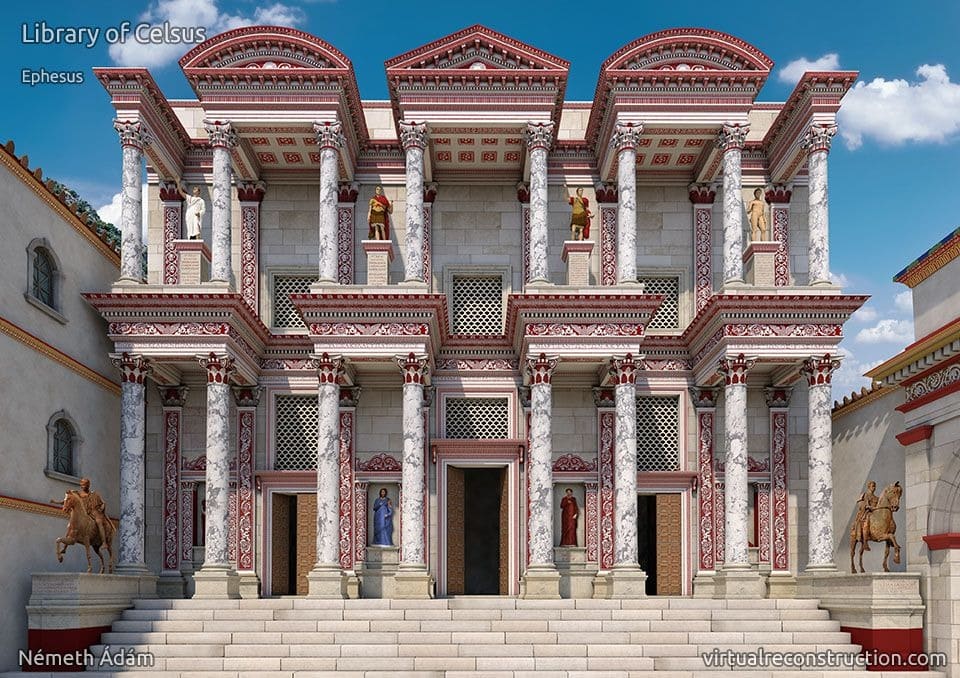
Why is the Library of Celsus famous?
The Library of Celsus is considered one of the few libraries still standing in the Roman Empire.
It was the third-largest library in the Greco-Roman world, only after the libraries of Alexandria and Pergamum.
The library is believed to have housed around 12,000 scrolls, making it a hub of knowledge and intellectual exchange in the Roman Empire.
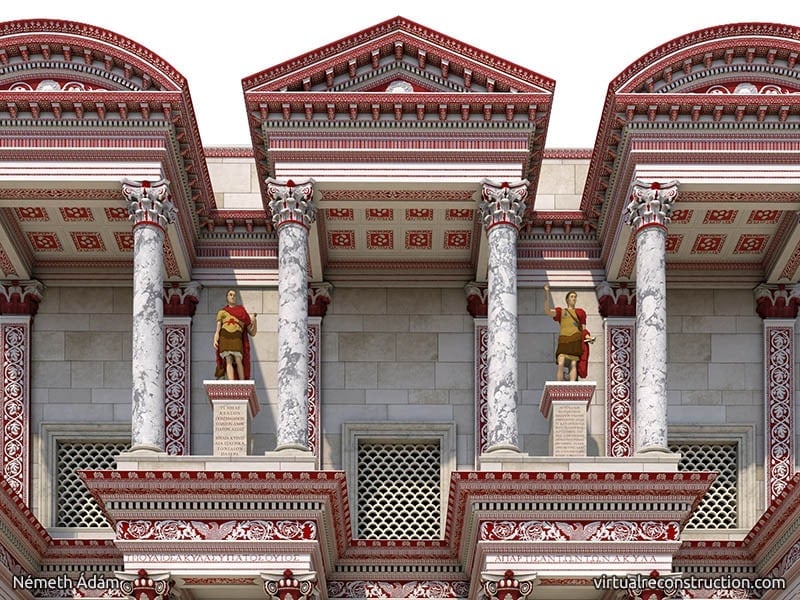
Celsus is interred in a decorated marble sarcophagus beneath the library, which was unusual in Roman times.
This special burial shows how important he was as a public official.
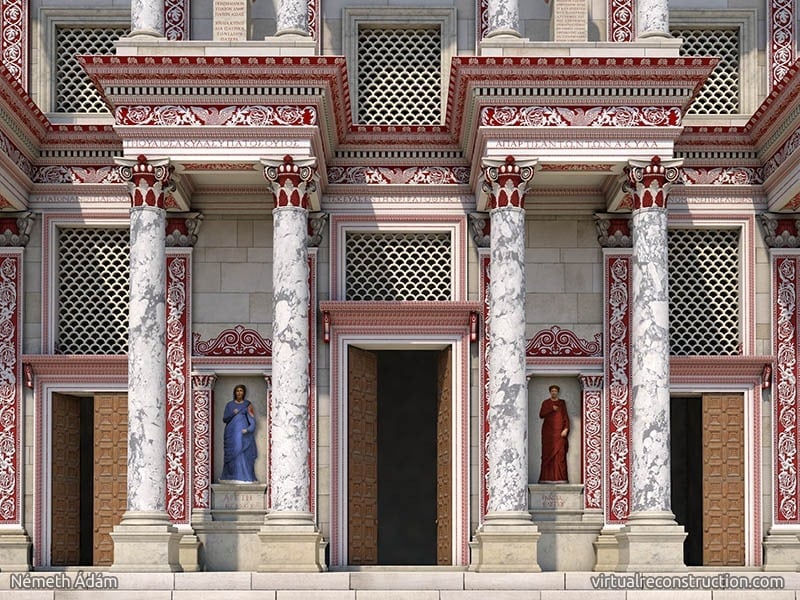
Greek and Roman Architecture of the Library of Celsus
The Library of Celsus was designed by the Roman architect Vitruoya.
It showcases a blend of Greek and Roman styles.
The Façade
The east-facing marble façade was built with a false perspective technique to create an illusion of greater grandeur, making the inner columns longer and the outer columns higher.
It is richly decorated with botanical carvings, acanthus leaves, scrolls, and fasces emblems, a symbol of the magisterial power of Celsus.

The façade features three levels, each with a unique style.
The lower level has Composite columns framing four aediculae, each containing statues representing virtues: Sophia (wisdom), Episteme (knowledge), Ennoia (intelligence), and Arete (excellence).
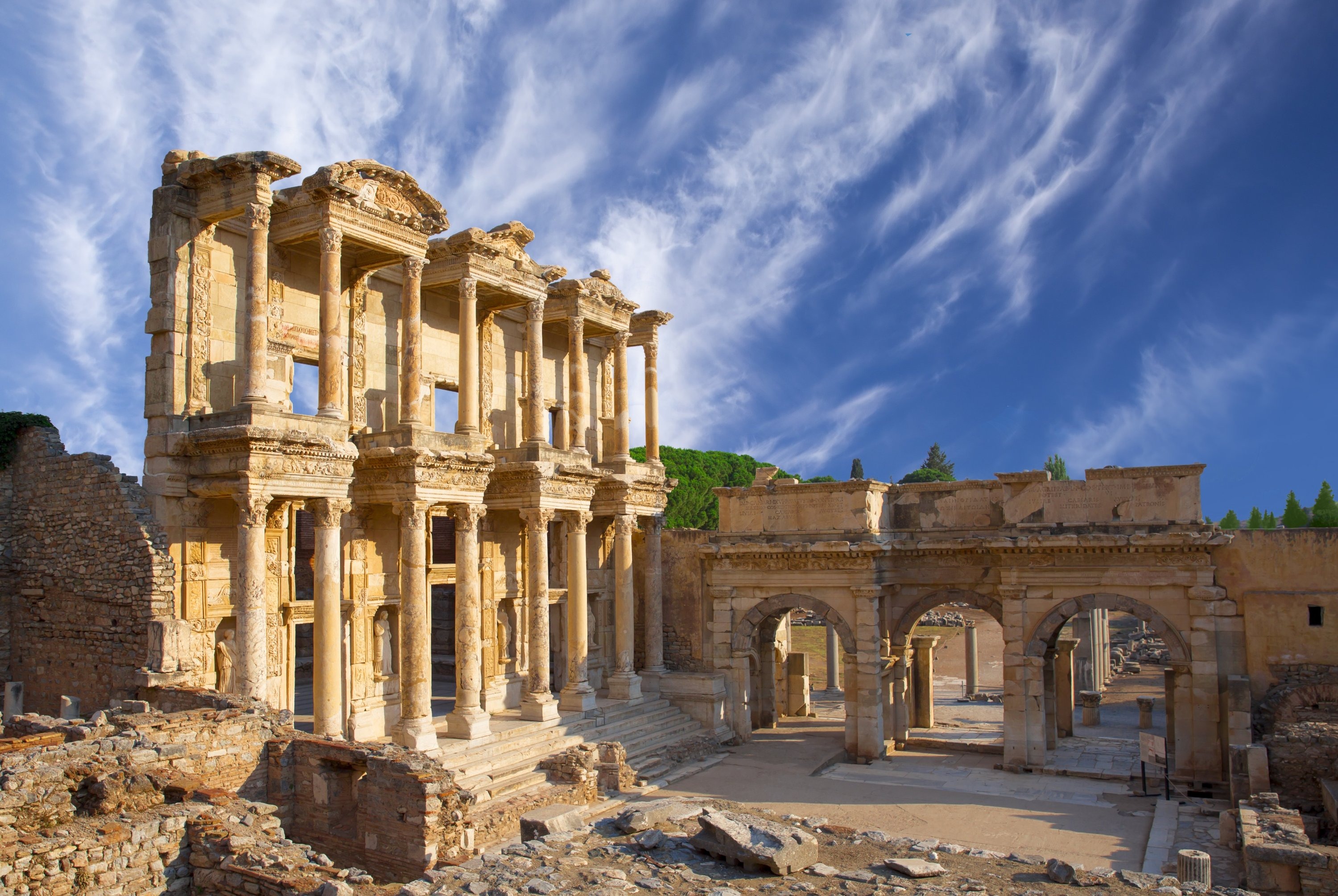
Interior Design
The library’s interior, measuring approximately 180 square meters (2,000 square feet), was designed to house three levels of bookcases accessed via stairways.
It would have featured decorated walls, luxurious furniture, and statues.
A central apse, framed by a large arch, contained a podium for a statue, possibly depicting Celsus or Minerva, the Roman goddess of wisdom.
The niches, backed with double walls, likely served to control humidity and protect the scrolls from extreme temperatures.
Reading Room
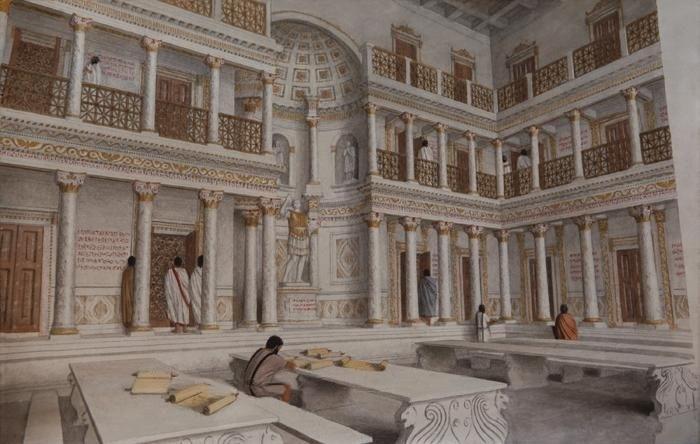
The main floor functioned as a reading room and was lined with niches housing wooden shelving cabinets (armaria) for about 12,000 scrolls.
The main floor served as a reading area, lit by large eastern windows.
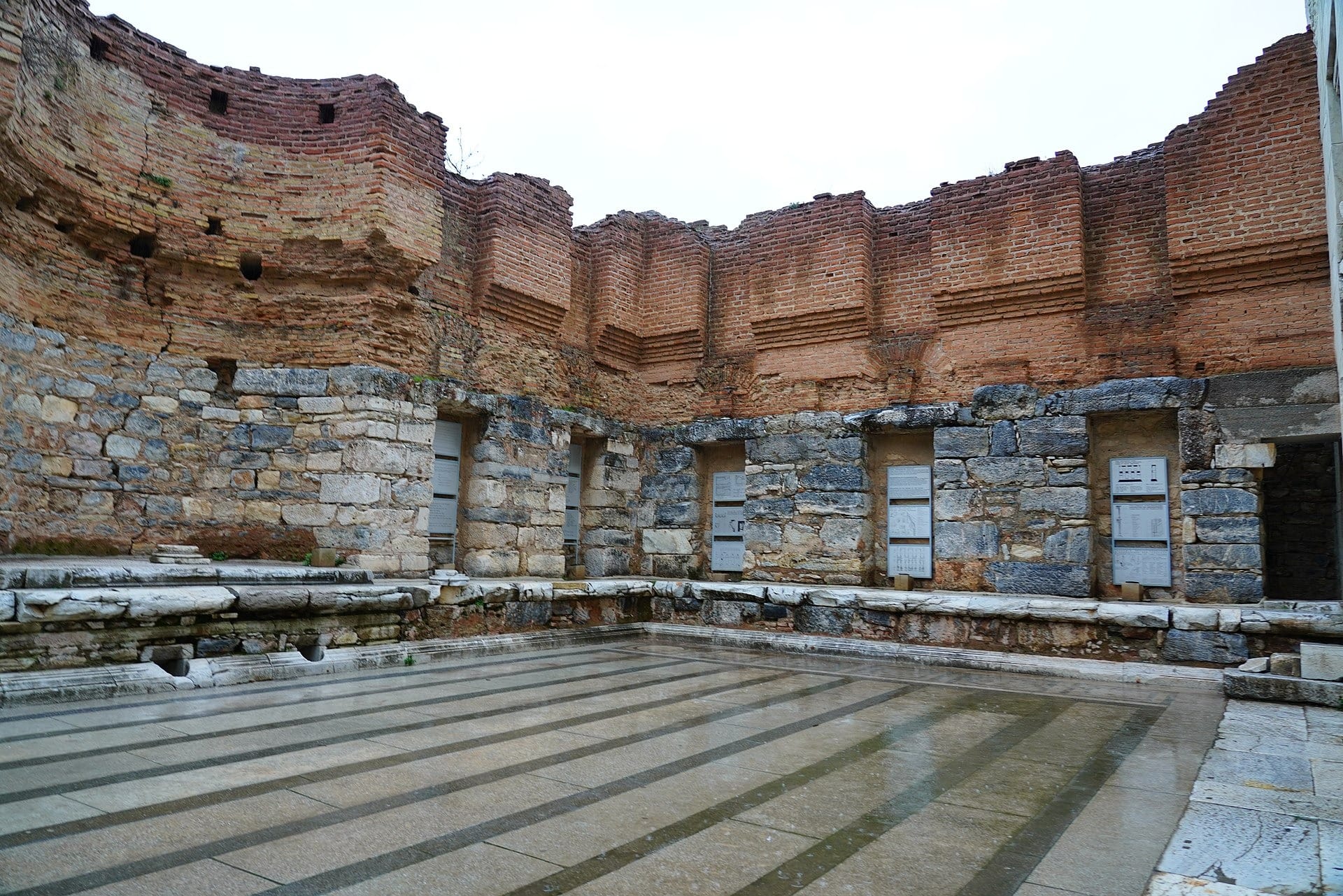
Celsus’s Mausoleum
Under the library’s floor is a mausoleum for Celsus himself, containing his decorated marble sarcophagus.

The Library of Celsus was destroyed
The interior of the library was destroyed by fire in 262 CE, likely due to a Gothic invasion or an earthquake.
The interior and its contents were destroyed by fire, but the façade remained standing.

Another earthquake in the 10th or 11th century caused further damage to the façade.
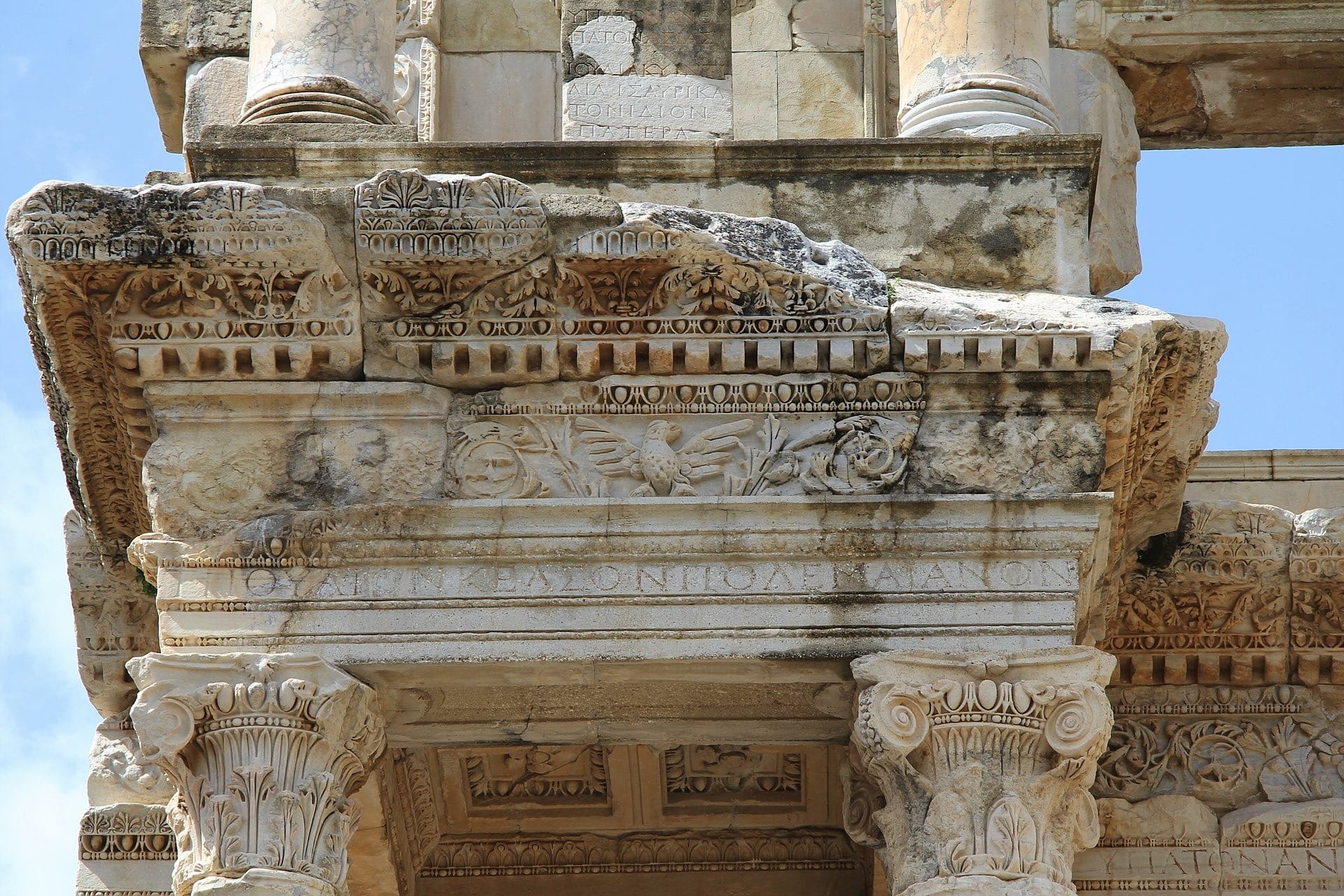
Reconstruction Efforts
In the early 20th century, Austrian archaeologists excavated the site and found many architectural fragments.

From 1970 to 1978, German archaeologist Volker Michael Strocka led a meticulous reconstruction project, using original fragments and traditional techniques to re-erect the façade.

What is the inscription on the Library of Celsus?
The inscription on the Library of Celsus is dedicated to Tiberius Julius Celsus Polemaeanus by his son, Tiberius Julius Aquila Polemaeanus.
The full inscription reads:
“To Tiberius Julius Celsus Polemaeanus, consul, proconsul of Asia. Tiberius Iulius Aquila Polmaeanus, consul, his son, built the [after him named] “Celcius” library from his own means with the entire [architectural] decorations and ornaments as well as the books.
He bequeathed for its maintenance and the purchase of [further] books 25,000 dinars, from which [however] 2000 were diverted for the expenditures of the current year, so that from the annual interest on the remaining capital of 23,000 dinars the library will be maintained and its attendants will be paid [800] dinars, to be paid out in perpetuity on the birthday of Celsus.”
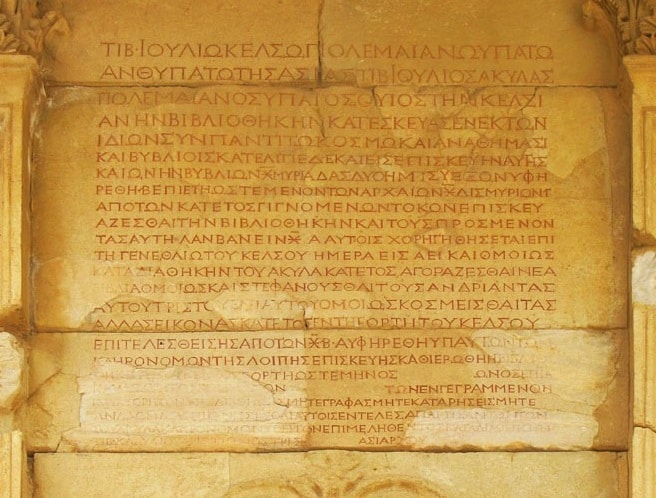
“And in the same way, according to the will of Aquila, new books for the library shall be purchased every year.
Furthermore, the statues of Celsus shall be crowned three times a year; and finally the other statues should be decorated on the [birthday] feast of Celsus.”
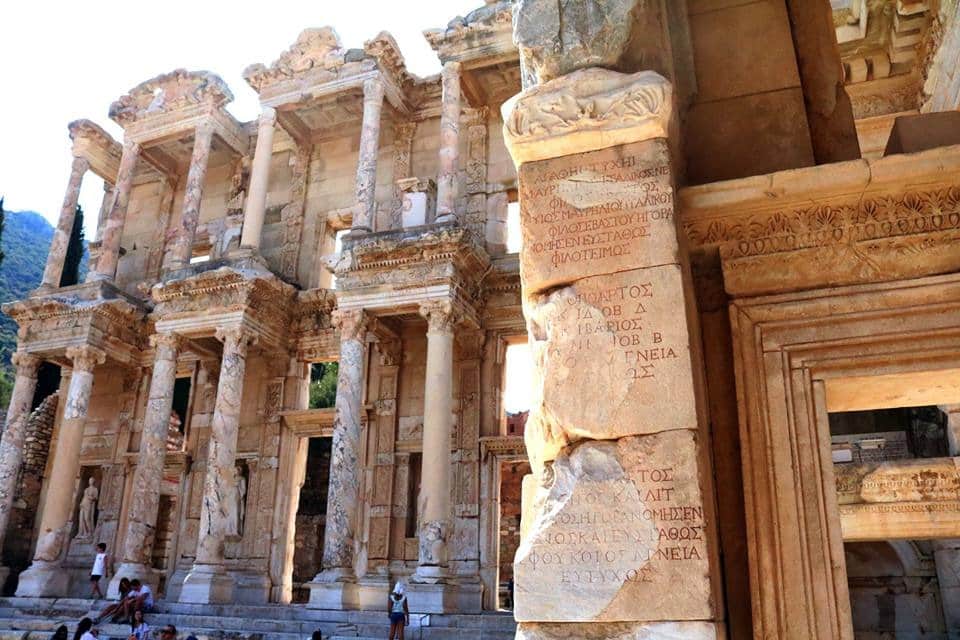
“After the completion of outstanding building work, for which the 2000 dinars were diverted from the bequest, the library was consecrated on the feast day of Celsus, so that with the month … on the 17th day, after which the money ………… which are [here] inscribed, according to the wording of the testament, no litigation nor claim nor financial responsibility can arise, after the heirs of Aquila have completed the building, since according to his testament they are wards of Tiberius Claudius Aristion, three times Asiarch.”
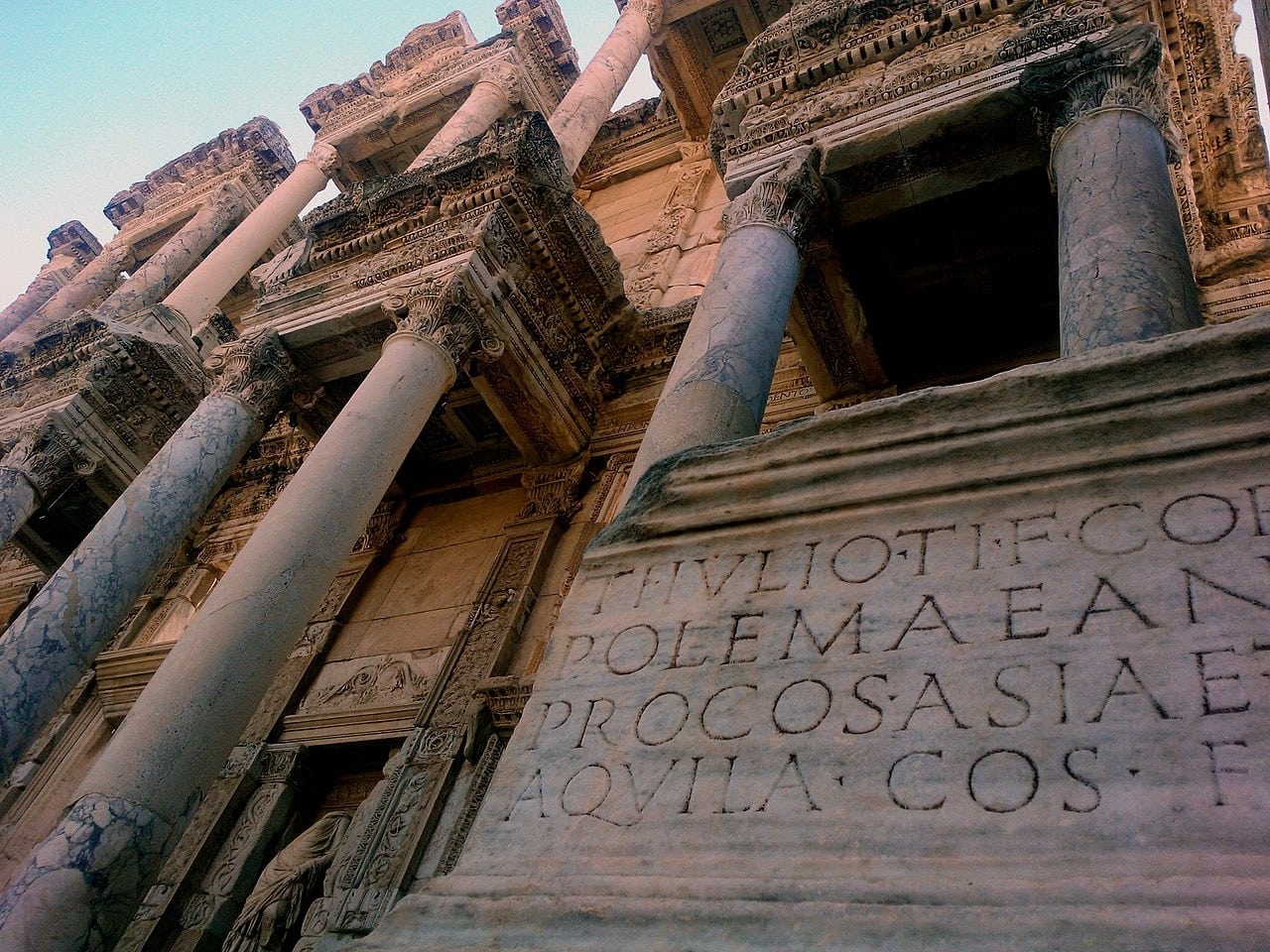
What are the four virtues of the Library of Celsus?
The statues adorning the facade of the Library of Celsus represent the Four Virtues:
1. Sophia (Wisdom)
Sophia embodies the virtue of wisdom, an essential quality in ancient Greek and Roman philosophy.
The statue of Sophia likely depicted her with a serene expression, holding objects such as a scroll or a book, symbolizing knowledge and learning.

2. Arete (Excellence)
Arete stands for excellence and virtue in all aspects of life, encompassing moral integrity, courage, and the pursuit of personal and communal good.

3. Episteme (Knowledge)
Episteme represents the concept of knowledge, emphasizing the importance of acquiring and understanding information.

4. Ennoia (Thought)
Ennoia signifies intelligence, the ability to think critically and understand complex ideas.


